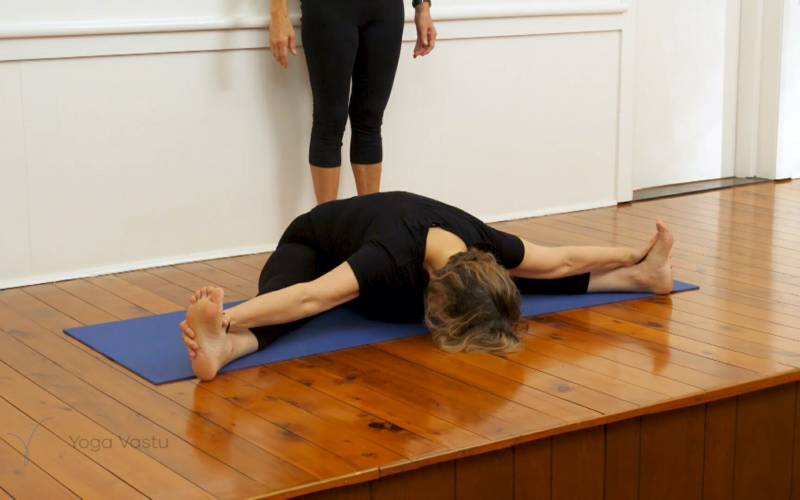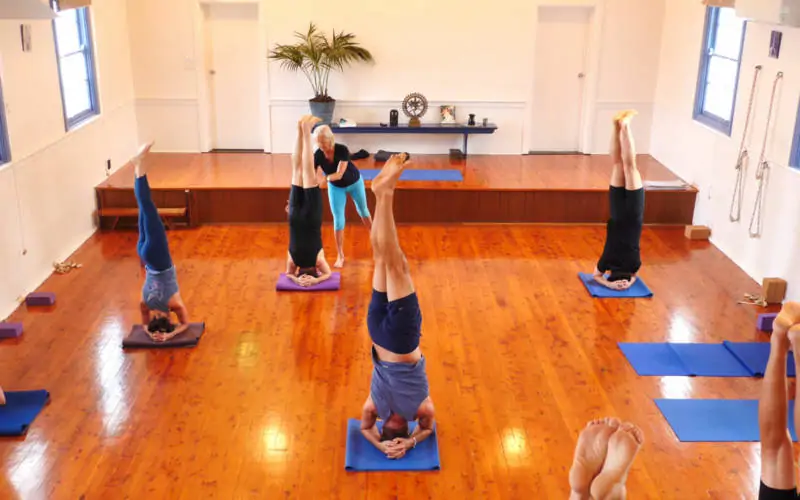How to perform Heron Pose
Start in Dandasana. Bend one leg back into Virasana. Extend the other leg upward, so that, ideally, your shin meets your head. Use a belt if necessary.
What is Krounchasana?
An intense forward bend with a focus on extending the hamstrings and simultaneously improving knee mobility. This is an asymmetric posture. You start in Dandasana, then bend one leg backwards into Virasana and extend the other forward and up towards your head.
It is necessary to keep an eye on the position of your hips and buttocks. The sit bones should be pointing down and the hips should resist the urge to twist. Keep your torso long and extending up through the crown of your head. As you pull the leg towards you make sure your abdomen doesn’t sink, pull your navel back.
When to use it?
This pose requires a significant degree of flexibility and concentration. Seen as many actions are happening at the same time, you need to direct your attention to all the muscles involved and make sure that you aren’t slouching or collapsing into this pose, but are rather performing all the actions with a high sense of awareness.
Seen as it is asymmetric, Krounchasana should be repeated on both sides. A belt can be used if you are struggling to reach your foot without your shoulders caving in.
What are its benefits?
This asana intertwines strength and flexibility, bringing balance to body and mind. By engaging the core and stretching the hamstrings, Krounchasana fortifies the abdominal muscles and improves digestion. As the spine elongates, it invigorates the nervous system, enhancing focus and concentration. It stimulates the kidneys and liver, promoting detoxification and purification of the body. The Heron Pose also nurtures a deep sense of calm and tranquility, releasing tension and anxiety. With regular practice, Krounchasana gifts practitioners with a rejuvenated spirit and a supple, resilient physique.








